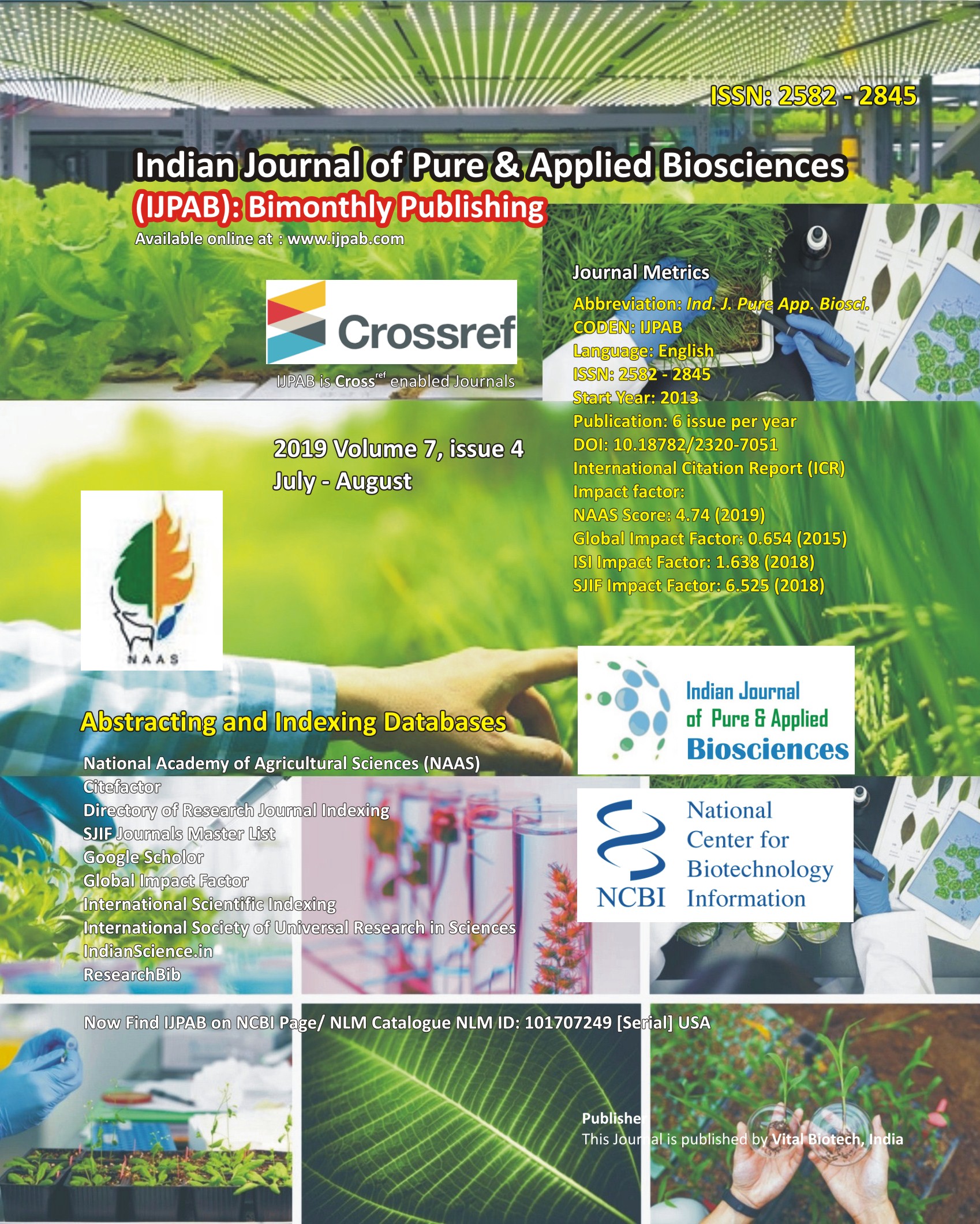
-
No. 772, Basant Vihar, Kota
Rajasthan-324009 India
-
Call Us On
+91 9784677044
-
Mail Us @
editor@ijpab.com
Indian Journal of Pure & Applied Biosciences (IJPAB)
Year : 2019, Volume : 7, Issue : 4
First page : (73) Last page : (79)
Article doi: : http://dx.doi.org/10.18782/2320-7051.7660
Comparison of Nasolacrimal Duct Obstruction in Pre-Term and Full-Term Infants
Maryium Iqbal1 and Musarrat Sharif2*
1Department of Allied Health Sciences, University of Lahore, Lahore, Pakistan
2Institute of Molecular Biology and Biotechnology, University of Lahore, Lahore, Pakistan
*Corresponding Author E-mail: musarratsharif388@gmail.com
Received: 18.07.2019 | Revised: 23.08.2019 | Accepted: 29.08.2019
ABSTRACT
Congenital Nasolacrimal Duct Obstruction (CNLDO) is the condition in which a tear duct had not open at the time of birth. It is an obstruction of the lacrimal drainage system. In Infants, the majority of Nasolacrimal Duct Obstruction is congenital. As a result of which, there will be a continuous discharge. The obstruction occurs most commonly at the valve of Hasner, at the lateral end of the duct. It can be unilateral or bilateral. This condition is also known as Dacryostenosis. Congenital Nasolacrimal Duct Obstruction is present in 4-6% of normal newborn children. To determine the rate of Nasolacrimal Duct Obstruction in pre-term and full-term infants and the sticky discharge would be more in pre-term infants and watery discharge constitute the higher ratio in full-term infants. A comparative, observational study was conducted a Department of Paediatrics FMH College of Medicine & Dentistry, Shadman Lahore. It was six month study after the approval of synopsis from August 2017 to January 2018. Subjects were up to the age of one year. One Hundred Pre-Term and One Hundred Full-Term Infants was included in this study. A self-designed questionnaire was used to collect data. Regurgitation Test was used to detect obstruction below the lacrimal sac. 200 subjects were enrolled in the study to compare the incidence of congenital nasolacrimal duct obstruction in pre-term and full-term infants. Out of them, 100 subjects were pre-tem so as full-term. Out of 200 subjects, we have 121 males (60.5%) and 79 females (39.5%).. The mean age of 200 subjects 56.5000±92.27250 days. In this study, 100 pre-term and 100 full-term infants were examined using regurgitation test to determine the presence of congenital nasolacrimal duct obstruction. Out of 100 pre-term infants, 36 were found of having nasolacrimal duct obstruction as compared to 39 full-term infants. In terms of birth history and regurgitation test, Chi Square value was 0.192 and P value is 0.385, so the results were insignificant. Out of 36 positive pre-term cases, 12 subjects were having watery discharge and 24 were having sticky discharge in contrast with 39 positive full-term infants in which 22 were found of having watery discharge and 16 were having sticky discharge. In term of birth history and type of discharge Chi square value was 4.573 and P value was 0.102, so the results were insignificant. Congenital nasolacrimal duct obstruction is a common pediatric pathology seen in ophthalmology. This study reported a higher incidence of congenital nasolacrimal duct obstruction in full-term infants as compared to pre-term infants. This might be expected in the light of fact that pre-term infants kept in a clean and protective environment for a limited period of time as compared to full-term infants.
Keywords:Infants, Nasolacrimal duct, Congenital
Full Text : PDF; Journal doi : http://dx.doi.org/10.18782
Cite this article: Iqbal, M. & Sharif, M. (2019). Comparison of Nasolacrimal Duct Obstruction in Pre-Term and Full-Term Infants, Ind. J. Pure App. Biosci. 7(4), 73-79. doi: http://dx.doi.org/10.18782/2320-7051.7660

